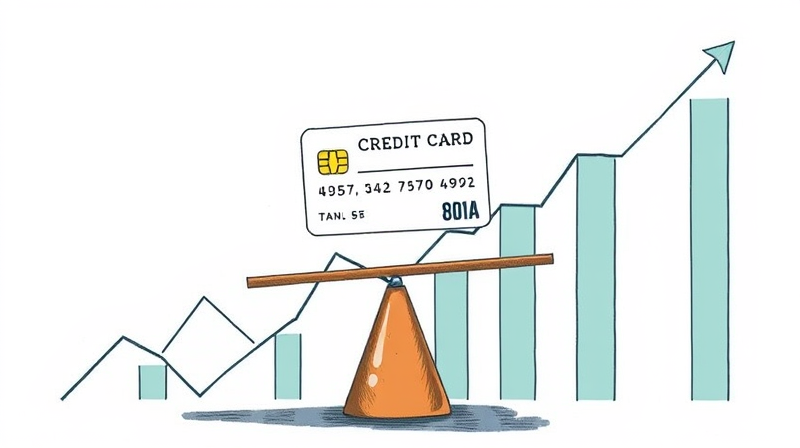
Sharing finances can strengthen a relationship or create tension. For couples considering a joint credit card, understanding the mechanics, benefits, risks, and best practices is vital to making an informed decision and avoiding potential pitfalls.
A equal shared credit card ownership account is held by two individuals—often partners—who share equal responsibility. Unlike adding an authorized user, where only one person is liable, joint holders both sign the agreement and are fully responsible for every charge made on the card.
During the application, the issuer performs hard inquiries on both credit reports and evaluates each person’s income. Approval odds can improve if one partner has a strong history, allowing the couple to secure a higher credit limit or lower interest rate than the lower-credentialed individual could obtain on their own.
Once active, both partners receive cards in their names. Purchases appear on a single monthly statement, and the full balance must be paid by the due date. Even one missed payment can trigger late fees, higher rates, and damage to both credit scores.
Availability of joint credit cards has declined. Many major banks now favor authorized user setups. Couples interested in this arrangement should research issuers—especially credit unions—to find a card that fits their needs.
When managed correctly, joint cards can be a powerful tool for aligning financial objectives and building shared wealth.
Couples can build and strengthen credit history together. On-time payments reported to credit bureaus help both partners establish or improve credit scores, which is invaluable when applying for mortgages or auto loans.
Access to better interest rates and higher limits is a major draw. A strong credit profile from one partner can lead to premium card features, 0% APR offers, or reduced fees—benefits that might elude the lower-scoring spouse alone.
Simplified expense tracking via one consolidated monthly statement reduces administrative effort. Instead of juggling multiple bills, couples review a single report, freeing time for planning vacations or major purchases.
Accumulating shared rewards and benefits accelerates progress toward joint goals. With combined spending, cashback, points, or miles add up more quickly, whether funding a dream trip or offsetting everyday costs.
The need to discuss purchases often fosters financial transparency and trust. Regularly reviewing statements together encourages open conversations about priorities and values, reinforcing both fiscal and emotional bonds.
Despite the advantages, joint credit cards carry significant risks that can impact both partners.
A shared legal debt obligation means that overspending or missed payments by one person affects both credit scores. Late fees, penalty APRs, and collection actions can undermine financial stability.
High utilization—when a balance approaches its limit—can lower scores for both cardholders. If one partner charges a large expense, like medical bills or home repairs, the sudden spike could harm creditworthiness.
Disputes over spending habits may strain the relationship. One partner might prioritize necessities while the other indulges in luxury items, creating tension that overshadows the original purpose of joint finances.
Closing a joint account after a breakup requires cooperation. Both parties must agree to cancel the card and settle the balance. If one partner refuses or is unable to pay, the other must cover the debt to avoid credit damage.
Finally, the shrinking availability of joint products can lead to fewer options for 0% balance transfers, low APR promotions, or premium travel perks. Couples may find themselves stuck with higher fees and fewer rewards compared to single applicants.
Couples can achieve similar benefits with lower risk using these strategies:
Each alternative involves trade-offs: limited reward sharing, added coordination, or slower credit-building. Couples should weigh these against their comfort with joint financial exposure.
Effective management of a joint credit card hinges on clear communication and proactive planning.
Begin by scheduling monthly budget meetings to review spending, adjust targets, and identify unauthorized charges. This habit fosters accountability and keeps both partners aligned.
Create clear written financial agreements specifying who pays the bill, monitors the account, and covers emergencies. Documenting these roles reduces ambiguity and potential conflicts.
Build an emergency fund covering three to six months of living expenses. A robust safety net prevents reliance on credit cards during crises, protecting both credit scores.
Review issuer policies annually. Terms, fees, and rewards can change, and staying informed lets couples capitalize on new offerings or switch cards for better benefits.
Consider setting individual spending caps within the account. Agreeing on maximum charges or requiring mutual approval for large purchases prevents overspending while maintaining autonomy.
Reviewing the key distinctions side by side helps couples choose the best approach for their needs:
This comparison underscores that joint cards offer full benefits but greater exposure, while authorized user options provide protection with fewer perks.
Choosing a joint credit card is more than a financial decision—it is a testament to mutual trust and shared vision. When used wisely, it can support milestones like purchasing a home or funding family vacations.
However, entering this arrangement without thorough planning can lead to lasting credit damage and relationship strain. Couples should weigh alternatives, define clear ground rules, and maintain open dialogue.
Ultimately, the success of a joint credit card depends on both partners’ commitment to align habits and respect shared obligations. With thoughtful preparation and ongoing communication, it can become a cornerstone of a strong financial partnership.
References













